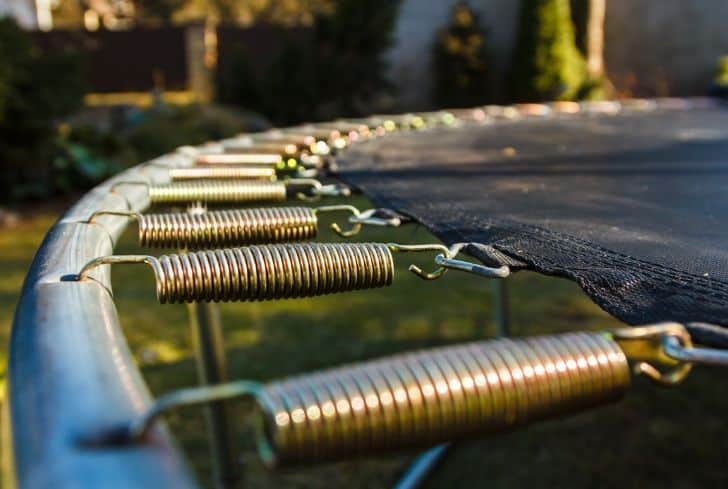Is your trampoline no longer as bouncy as it used to be? You may be asking, “Is it time to repair the trampoline springs?” if you’ve noticed your trampoline has lost its bounce. “Yes” might be the response.
In addition to changing the trampoline springs, you should inspect the trampoline mat to ensure that it is still safe and has some bounce remaining in it. When purchasing replacement springs, seek the highest quality possible as well as materials that will endure the elements – stainless or galvanized steel are the best options.
The springs on your trampoline will most likely need to be replaced since they have stretched out. When they’re stretched, they lose strength, which means you won’t be able to rebound as high as you used to.
String overstretching is a newer problem with mass-produced trampolines. Look for a trampoline with high-quality springs when purchasing one. Close trampoline spring positioning and a larger number of springs, as opposed to a lesser number, will boost bounce and lessen the frequency with which you must change them.
Is it time for the trampoline springs to be replaced?
It’s better to buy enough trampoline springs to replace all of them rather than replacing individual springs around the trampoline. When you repair trampoline springs here and there, you risk not replacing all of the ones that need to be replaced. Another disadvantage of changing individual springs is that your trampoline’s jumping capability will be unequal.
Inquire about which trampoline springs are optimal for your trampoline’s kind, size, and style. To get the finest jump experience, get springs that match your specific above-ground or inground trampoline.
It’s better to replace trampoline springs of the same length, but you can add up to one inch to the length and still jump safely. Because the trampoline height was created with the original length springs in mind, the longer the spring, the more likely you are to hit the ground.
What are the signs that the springs need to be replaced?
- Remove the springs from the above-ground or in-ground trampoline and grasp one end of the spring with your fist. Check the spring’s tightness by shaking it.
- They’re overstretched if they don’t return strongly into their natural relaxed condition once the spring is withdrawn.
To produce a decent test batch to check if the springs are safe, try at least a dozen of them. If you’ve never done this before, figuring out if spring is tight or overstretched will be difficult. We recommend consulting with a trampoline expert and/or changing the springs on a regular basis.
Give us a call and we’ll be happy to answer any further questions you have about buying an inground or aboveground trampoline.
Why are trampoline springs important?
Each bounce on the trampoline puts a strain on the springs as well as the trampoline mat. This is why your springs should be made of a robust galvanized metal like steel. Each season, springs should be inspected to determine their condition, as jumping on a trampoline with poorly maintained springs may be quite dangerous. If you see that they are rusted or strained, you must replace them before leaping. When not in use, cover the complete trampoline set up with a cover and try spraying the metal with an anti-rust chemical to keep your springs lasting longer and performing properly. The bounce in your trampoline depends on two major factors.
• One is the mat, which serves as the trampoline’s centrepiece; however, the quality and length of the springs around the edge are more significant.
• The quality and length of the springs will directly impact the height of bounce.

